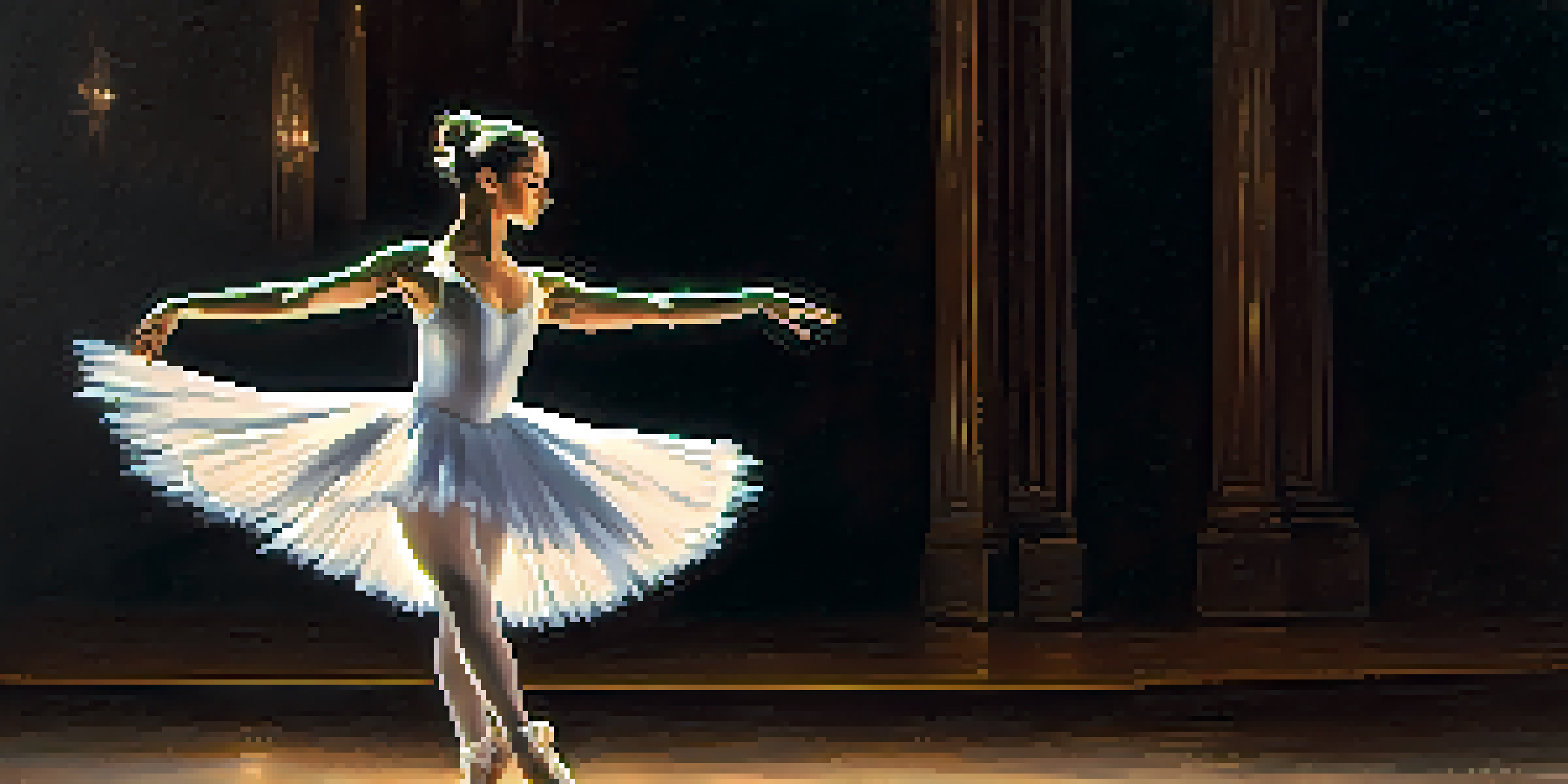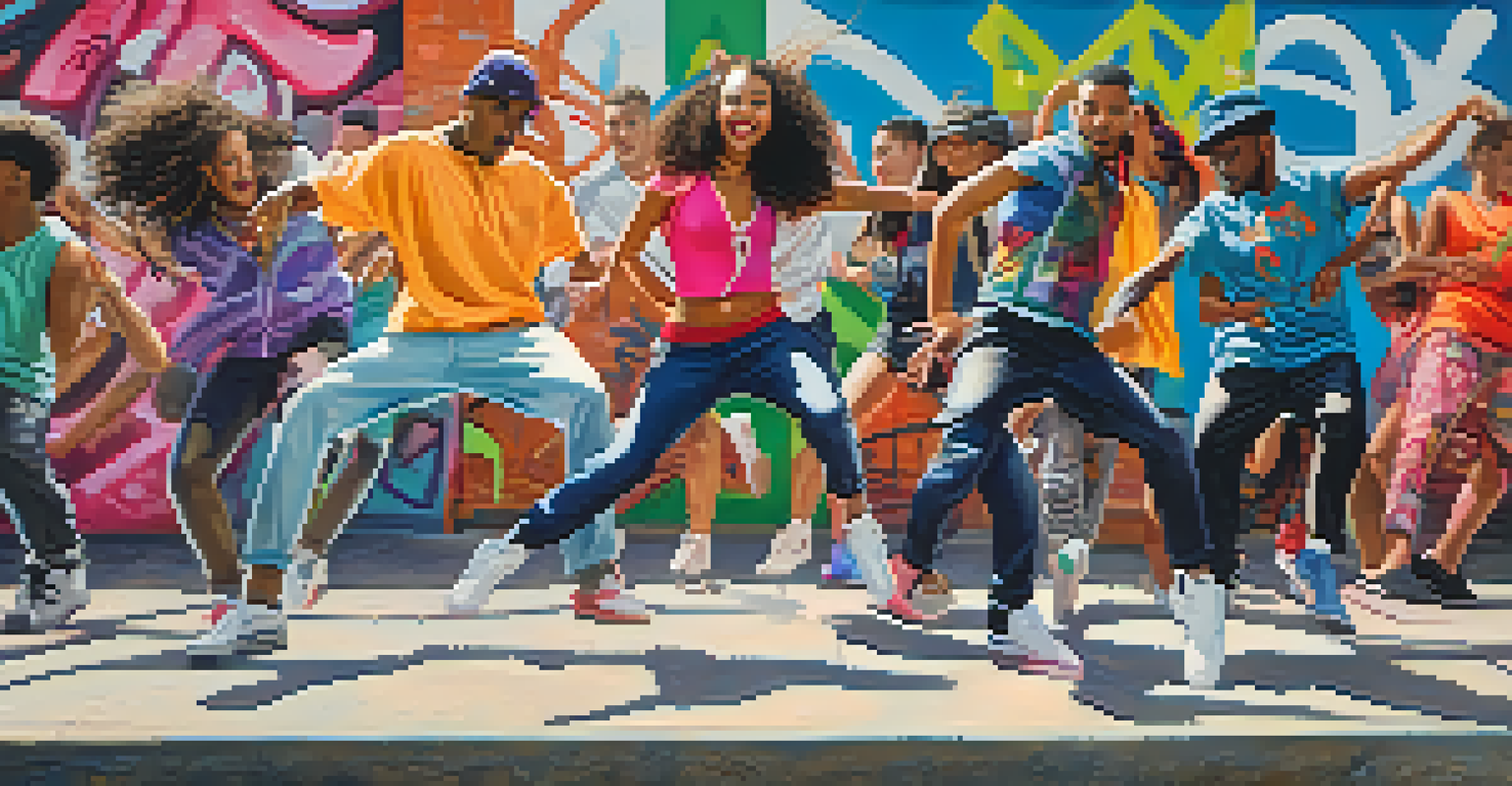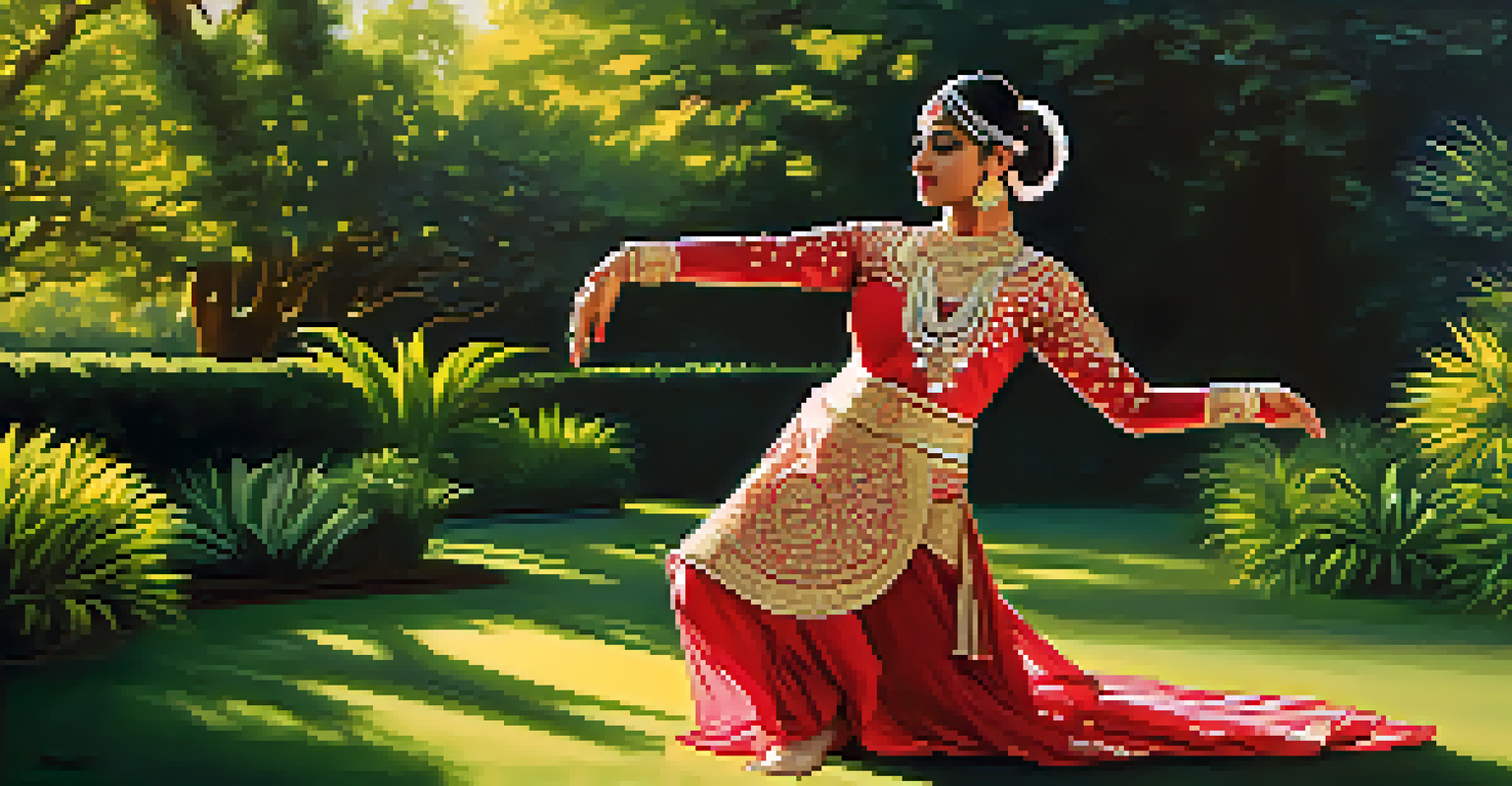Exploring Dance: A Fusion of Art and Scientific Inquiry

The Artistry of Dance: More than Just Movement
Dance is often seen as an expression of emotion and creativity, transcending mere physical movement. It's a language of its own, conveying stories and feelings that words sometimes fail to express. From ballet to hip-hop, each style carries its unique cultural significance and artistic flair, inviting viewers to connect on a deeper level.
Dance is the hidden language of the soul.
The beauty of dance lies in its ability to unite people from diverse backgrounds, cultivating a shared experience that resonates universally. Think of a wedding dance or a cultural festival; these moments bring joy and foster community, showcasing the innate human desire to connect through rhythm and movement.
However, the artistry of dance is not just about aesthetics. With each pirouette or hip-hop move, dancers engage in a complex interplay of body mechanics, demonstrating how art and science often go hand in hand.
The Science Behind Movement: Anatomy and Physiology
At its core, dance is a physical activity that relies heavily on the human body’s anatomy and physiology. Understanding how muscles, joints, and bones work together can enhance a dancer's performance and reduce the risk of injury. This knowledge allows dancers to optimize their movements, ensuring that they express their artistry while maintaining physical health.

For instance, a dancer needs to know how to properly engage their core to achieve balance and control during complex movements. This anatomical awareness not only enhances performance but also deepens the dancer's appreciation for their art, as they learn to listen to their body’s signals.
Dance: A Universal Language
Dance transcends physical movement, serving as a powerful medium for emotional expression and cultural connection.
Moreover, advancements in sports science have provided dancers with valuable insights into their training regimens. Techniques like biomechanics—studying the forces exerted by muscles and gravity—help dancers refine their skills and push the boundaries of what’s possible in dance.
The Psychology of Dance: Emotion Meets Expression
Dance is a profound form of emotional expression, and it offers unique psychological benefits. Engaging in dance can elevate mood, reduce stress, and foster a sense of community, making it a powerful tool for mental well-being. The rhythm and movement allow dancers to channel their emotions, providing an outlet for feelings they may not express otherwise.
Dance is the joy of movement and the heart of life.
Research suggests that dancing can trigger the release of endorphins, those feel-good hormones that contribute to happiness. This connection between movement and emotion underscores why many people turn to dance not just as a hobby, but as a form of therapy.
Moreover, participating in group dance sessions can cultivate social bonds, fostering a sense of belonging. Just consider a dance class, where participants share laughter and camaraderie while learning new routines—it's not just about the dancing; it's about the community created in the process.
Choreography: The Art of Structuring Movement
Choreography is where creativity meets structure. It involves the careful planning and arrangement of movements to create a cohesive dance piece that tells a story or conveys a theme. Choreographers are like directors in a film; they envision the final product and guide dancers to bring that vision to life.
In this process, understanding rhythm, dynamics, and spatial awareness becomes crucial. Choreographers often play with formations and patterns, crafting visually appealing sequences that captivate audiences. This artistic endeavor requires not just creativity but also a keen understanding of body mechanics, timing, and emotion.
The Science of Dance Performance
Understanding anatomy and physiology enhances dancers' performance and helps prevent injuries.
For instance, a dramatic solo performance may feature sharp, angular movements to convey tension, while a group piece may incorporate fluid formations to evoke harmony. The interplay between choreography and emotional expression is what makes dance such a compelling art form.
Cultural Significance: Dance as a Reflection of Society
Dance is deeply rooted in cultural traditions, serving as a reflection of societal values and historical narratives. Different styles of dance often emerge from specific cultural contexts, embodying the stories and experiences of the people within those communities. From traditional folk dances to modern interpretations, each dance form tells a unique tale.
For example, the vibrant samba of Brazil showcases the country’s rich cultural heritage and festive spirit, while the graceful movements of classical Indian dance are steeped in centuries-old traditions. These forms of dance not only entertain but also educate audiences about diverse cultures.
As globalization continues to shape our world, dance has become a medium for cultural exchange, allowing artists to share their heritage while incorporating influences from other styles. This fusion enriches the global dance landscape, creating a beautiful tapestry of movement and expression.
Technology in Dance: Innovation Meets Tradition
In recent years, technology has drastically transformed the dance landscape, merging tradition with innovation. From augmented reality to motion capture, dancers and choreographers are exploring new ways to enhance their art form. This technological infusion opens up exciting possibilities for creativity and audience engagement.
For instance, dance performances can now incorporate digital elements, allowing for interactive experiences that captivate viewers. Imagine a dance show where the backdrop dynamically changes in response to the dancers’ movements—this blending of digital art and dance creates a mesmerizing spectacle.
Dance's Cultural Reflection
Different dance styles embody the values and narratives of their cultures, making dance a rich tapestry of human experience.
Additionally, technology aids in dance education, with online platforms providing access to tutorials and classes from around the world. This democratization of dance education allows individuals from various backgrounds to explore and develop their skills, fostering a global community of dancers.
The Future of Dance: Evolving with the Times
As we look to the future, dance continues to evolve, reflecting the changes in society and culture. New styles and forms are constantly emerging, influenced by contemporary issues and technological advancements. This evolution keeps dance fresh and relevant, inspiring new generations of artists and audiences alike.
Moreover, the integration of dance in various fields—such as therapy, education, and entertainment—highlights its versatility and importance in our lives. Whether it’s using dance as a therapeutic tool for mental health or incorporating it into educational curricula, its impact is undeniable.

Ultimately, the fusion of art and scientific inquiry in dance will continue to shape its future. As practitioners explore the depths of human movement and emotion, we can anticipate exciting developments that will enrich our understanding of this timeless art form.